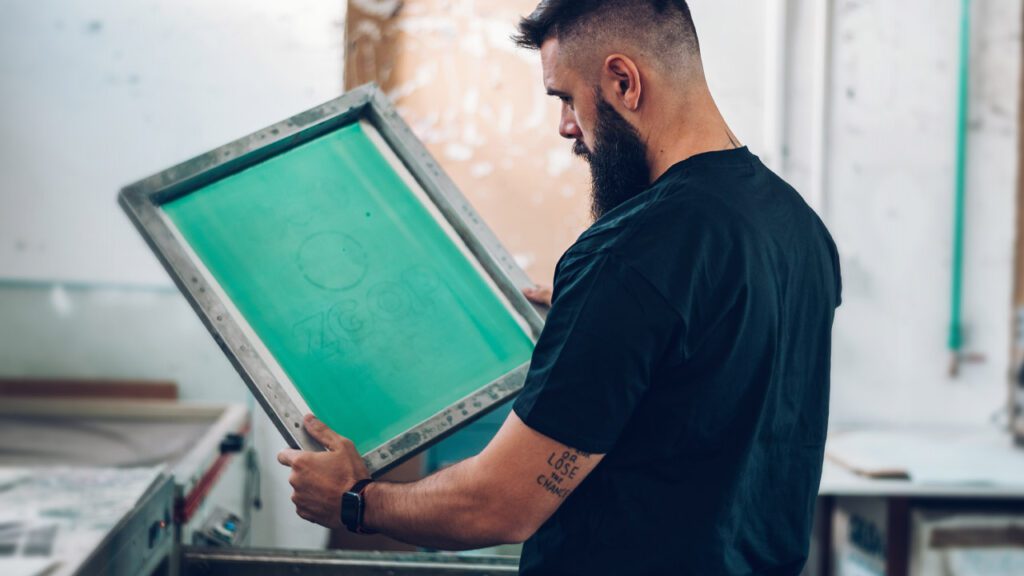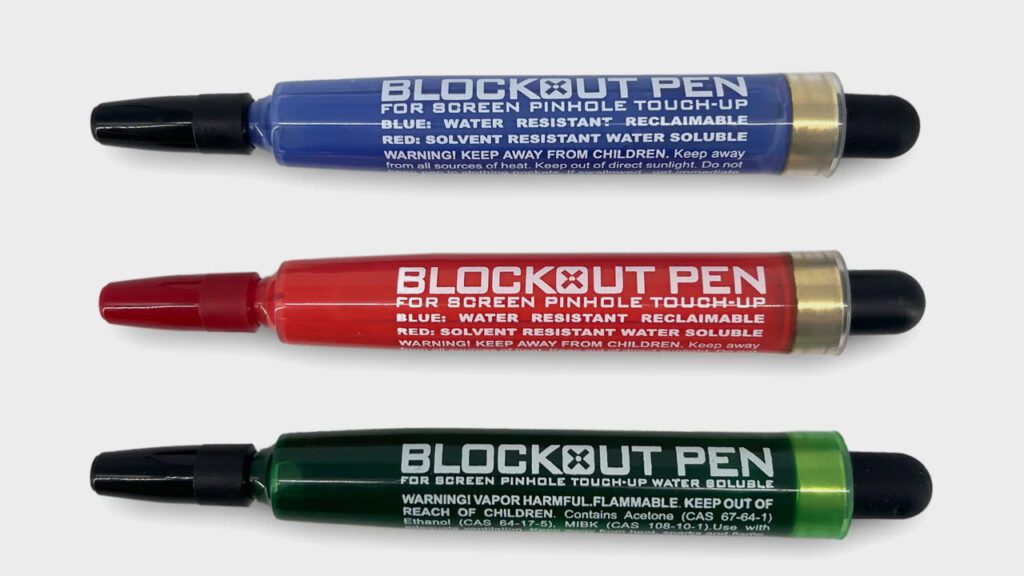At the core of every striking screen print lies a perfectly crafted stencil, underpinned by the critical role of emulsion. This article explores the nuanced world of emulsions in screen printing, highlighting their types, application methods, and their vital contribution to crafting flawless stencils.
Credit: M&R Printing Equipment
What Is Screen Printing Emulsion?
Screen printing emulsion is a special liquid that’s key to making screen prints. It’s spread over the screen and then hardened by light in just the right spots. This creates a stencil that controls where ink can go through, making sure the design comes out just right on things like t-shirts or posters. It’s like setting up a roadmap for the ink, so every print looks sharp and clear.
Emulsion Is The Backbone Of Stencils
Emulsion serves as the cornerstone of stencil creation in screen printing. This light-sensitive liquid coating, when applied to the screen mesh and exposed to light, solidifies to form a precise stencil. This stencil then guides the ink onto the substrate to bring the desired design to life.

The Different Types of Emulsions
Selecting the appropriate emulsion is pivotal for achieving optimal print quality and ease in screen preparation. The spectrum ranges from one-step emulsions, ideal for beginners and quick projects, to two-step dual cure emulsions designed for durability in more complex prints.
- One Step Emulsion (No Diazo): One-step emulsions are straightforward, pre-sensitized solutions ready for immediate use, catering, especially to novices. They are best suited for less complex tasks or situations where time is of the essence.
- Two-Step Dual Cure Emulsion (Includes Diazo): For intricate, high-quality printing, two-step emulsions are the go-to. Requiring the addition of Diazo to activate, these emulsions form a more robust stencil, offering enhanced clarity and durability, perfect for professional-grade applications.

Blockout Pens Are Your Best Friends
Blockout pens are specialized tools used in screen printing to correct minor flaws in emulsion-coated screens. Designed for pinpoint accuracy, they allow screen printers to fill in unwanted pinholes or tiny blemishes in the stencil, ensuring a flawless final print. These pens are particularly useful for maintaining the integrity of intricate designs, providing a quick and efficient solution for last-minute adjustments without the need for complete stencil redevelopment.
- Coating The Screen: Applying emulsion evenly across the screen mesh is crucial for a high-quality stencil. Utilizing a scoop coater ensures a uniform layer on both sides of the mesh. The application’s technique directly influences the emulsion’s thickness and the stencil’s resolution.
- Drying and Storage: Correct drying in a dark, controlled setting prevents common issues like pinholes or uneven coatings. It’s equally important to store the emulsion-coated screens in a light-safe area to preserve their quality.
Troubleshooting Exposure Issues
Proper exposure is critical; underexposure can lead to issues with stencil durability and quality, while overexposure might result in a stencil that’s too hard to remove or affects the quality of the print. Adjusting exposure settings based on these challenges is crucial for achieving the best possible outcome.
The Wrap-Up
In the realm of screen printing, emulsions are the foundational elements that transform simple designs into intricate, lasting prints. Mastering the application of emulsion and fine-tuning exposure settings are essential skills for screen printers striving to create impeccable stencils and stunning prints.
- Screen Printing: Exposing With Computer-To-Screen Equipment
- A Look At Direct-To-Embroidery Printing Technology
- Screen Printing: Boost Accuracy With Laser-To-Screen Tech
- Impressions Expo Long Beach 2024 Walkthrough
- Screen Printing: A Guide To Measuring Screen Tension
- Screen Printing: Choosing The Right Mesh Count
- Top 5 Embroidery Machine Factors To Consider When Buying Equipment
- Screen Printing: Comparing Aluminum vs Wood Frames
- Screen Printing: Understanding The Impact Of Mesh Counts
- DTF Printing: How To Choose The Right Printer & Dryer




